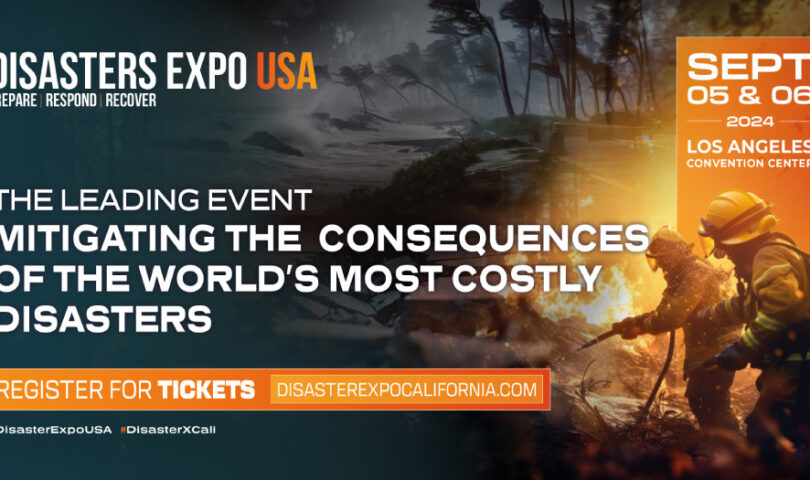
- Community Alert Systems: Utilizing community alert systems to notify residents of potential wildfire risks and evacuation procedures can save lives and minimize damage.
- Fire Weather Forecasting: Utilizing advanced weather forecasting technology to predict high-risk fire weather conditions can help authorities prepare in advance and take necessary precautions.
- Collaboration with Firefighting Agencies: Establishing effective communication and coordination with firefighting agencies can ensure a swift and coordinated response to wildfire incidents.
By integrating these advanced detection and early warning systems with proactive prevention strategies, communities can significantly reduce the impact of wildfires and protect lives and property.
Conclusion
Wildfires are a growing threat to ecosystems and communities around the world, fueled by a combination of natural and human factors. Understanding the causes of wildfires and implementing effective prevention and mitigation strategies is crucial in minimizing their devastating effects.
By raising awareness, promoting responsible behavior, and investing in advanced detection and firefighting technologies, we can work towards a future where wildfires are less frequent and less destructive. It is essential for governments, communities, and individuals to come together to address this global issue and protect our planet for future generations.
Only through collective action and a commitment to environmental sustainability can we hope to mitigate the impact of wildfires and create a safer, more resilient world for all.
“.
—
Title: Understanding Wildfires: Causes, Prevention, and Management Strategies
The warning of wildfires looms higher than ever in the United States, with numbers steadily rising since the 1980s, impacting ecosystems and communities with dreadful aftereffects. Those infernos, fueled by way of parched crops and lofty winds, exacerbated by way of circumstance trade, pose vital demanding situations to environmental sustainability and human protection. Fresh occasions, such because the depressing wildfires in California and Australia, vividly illustrate the urgency of addressing this world issue.
However, what are the reasons for wildfires? Understanding jungle fires and correct wildfire prevention begin by grasping their core reasons – a variety of environmental and human-made factors. Here, we delve into how wildfires start, explore recent devastating events, and dig deeper into some essential management strategies.
How Do Wildfires Start?
Every wildfire originates from a convergence of three critical components: parched fuel like leaves and grass, oxygen in the breeze, and adequate heat to ignite and sustain combustion. These fires can arise naturally or through human activities – it’s crucial to understand the latter of these causes.
Natural Causes of Wildfires
Sun-baked fields with winds and an adequate amount of natural fuel to burn are susceptible to natural wildfires, usually triggered by lightning.
– Lightning: Lightning reaches very high temperatures, meaning it can easily start fires if it strikes a vulnerable area. All it takes is a single bolt hitting the field or some crops in a parched, stormy area to trigger a dreadful blaze.
Human Causes of Wildfires
The majority of wildfires are caused by human activity in one way or another, with common triggers including:
– Debris Burning
– Irresponsible Campfires
– Discarded Cigarettes
– Fireworks
– Planned Acts of Arson
– Technological Faults & Accidents
Whether these triggers are accidental or intentional, they are all preventable with a better sense of responsibility and support. Events like Wildfire Awareness Day underscore the need for improved education across the board, with fire training programs a necessity in at-risk areas.
It’s also essential to note that the number of both natural and human-caused wildfires is increasing primarily due to global warming.
Global Warming and Wildfires
The climate crisis plays into the number of wildfires significantly, with rising temperatures fueling the phenomenon from every angle. For one, rising temperatures generally create environments much more conducive to wildfires and their larger impacts. With hotter summers and lower precipitation winters, vegetation becomes warmer and drier, meaning any fire that starts is far more likely to spiral into a dreadful blaze.
Moreover, studies indicate that rising temperatures also feed into lightning activity. Warmer, longer summers mean hotter surfaces and increased carbon emissions, all of which increase the frequency and intensity of lightning storms.
This signifies that whether “natural” or entirely human-caused, the wildfire epidemic in America can largely be attributed to a lack of environmental stewardship and responsibility.
Case Study: The 2023 Maui Wildfires
The Maui wildfires of 2023 rank among the top 10 deadliest wildfires since 1871, the deadliest in over a century, and the worst disaster in Hawaiian history. Lahaina, a major tourist spot and former royal capital, was decimated along Kihei and the Upcountry area, resulting in nearly $6 billion in damages. Over 5,400 families remain displaced as of mid-January 2024, with 100 victims tragically losing their lives.
The Hawaii wildfire serves as a grim reminder of just how devastating these blazes can be. The response to the fires on Maui is also a poignant display of community resilience, even though the events could have been mitigated.
Despite the devastation, communities rallied in firefighting efforts and brave search and rescue operations. Ongoing rebuilding efforts underscored the need for increased resilience and the commitment to restoration, with some NGOs contributing significantly.
What Caused the Fires on Maui?
The prevailing theory so far is that the Hawaii wildfire was ignited by downed power lines, with the blazes subsequently exacerbated by the winds of Hurricane Dora, spreading the fire to drought-ridden vegetation. The destruction of Lahaina from the fires can be attributed to a lack of resilient infrastructure, with buildings and communities vulnerable to fires when they occur.
Wildfire Prevention Strategies
It’s one thing to understand the causes of wildfires, but once you know where the problem originates, it’s even more critical to have some wildfire mitigation strategies in place. These come in the form of both individual practices and more community-minded approaches.
Personal Strategies
If you’re in the wilderness, especially in an at-risk area, some straightforward wildfire prevention strategies include:
– Smoking with Caution
– Practicing Campfire Safety
– Using Fireworks Safely
– Parking Mindfully (undercarriages can set grass alight)
Community Prevention Strategies
Effective wildfire prevention requires proactive measures and community involvement, including practices such as:
– Public Education Campaigns: Teaching the community through the distribution of educational materials, early training, and community announcements on responsible outdoor practices reduces accidental ignitions.
– Regulatory Measures: Enforcing and implementing strict fire safety regulations, such as mandatory campfire certifications, helps mitigate risks. Deterrents like fines or legal charges are also effective in this regard.
– Community Engagement: Empowering communities through fire training programs enhances preparedness, especially in areas prone to wildfires.
By adopting these strategies, local governments can empower communities to significantly reduce the frequency and severity of wildfires, safeguarding lives, property, and natural ecosystems.
Wildfire Detection and Early Warning Systems
While community engagement and education are crucial aspects of wildfire prevention, it’s also important for organizations and governments to invest sufficiently in wildfire detection technology. Wildfire management is most effective when implemented as early as possible.
Appropriate detection technologies and strategies include:
– Wildfire Drones and Targeted Satellite Imagery: Custom-made drones and weather satellites monitor areas in real-time, collecting and providing critical data on fire outbreaks and progressions.
– Community Alert Systems: Utilizing community alert systems to notify residents of potential wildfire risks and evacuation procedures can save lives and minimize damage.
– Fire Weather Forecasting: Utilizing advanced weather forecasting technology to predict high-risk fire weather conditions can help authorities prepare in advance and take necessary precautions.
– Collaboration with Firefighting Agencies: Establishing effective communication and coordination with firefighting agencies can ensure a swift and coordinated response to wildfire incidents.
By integrating these advanced detection and early warning systems with proactive prevention strategies, communities can significantly reduce the impact of wildfires and protect lives and property.
Conclusion
Wildfires are a growing threat to ecosystems and communities globally, fueled by a combination of natural and human factors. Understanding the causes of wildfires and implementing effective prevention and mitigation strategies is crucial in minimizing their devastating effects.
By raising awareness, promoting responsible behavior, and investing in advanced detection and firefighting technologies, we can work towards a future where wildfires are less frequent and less destructive. It is essential for governments, communities, and individuals to come together to address this global issue and protect our planet for future generations.
Only through collective action and a commitment to environmental sustainability can we hope to mitigate the impact of wildfires and create a safer, more resilient world for all. Wildfires are a constant threat to communities and natural habitats, requiring a proactive approach to prevention, early detection, and effective management. By implementing a combination of technological advancements and community engagement, the impact of wildfires can be minimized.
One key aspect of wildfire prevention is the use of automatic detection systems that utilize heat and smoke sensors in high-risk areas. These systems can quickly detect fire activity and trigger rapid responses to prevent the spread of fires. Additionally, engaging local communities as human sensors can provide valuable first-hand reports of smoke or suspicious activities, enabling swift responses to contain wildfires.
In addition to early detection, proactive wildfire mitigation and ecosystem protection are essential for minimizing the impact of fires. Managed burns, strategic forest management practices, and the creation of fire breaks are all effective measures to reduce the risk of wildfires spreading uncontrollably. By implementing these physical mitigation strategies, fire-prone areas can become more resilient to potential disasters.
Furthermore, effective evacuation and crisis preparedness plans are crucial for at-risk communities. Developing population evacuation plans, implementing efficient communication methods, and promoting personal preparedness are all essential components of wildfire evacuation strategies. Ensuring that residents are informed and prepared to evacuate safely can save lives in emergency situations.
Taking a proactive approach to wildfire prevention and management is essential for protecting vulnerable communities and ecosystems. By investing in population education, technological advancements, and strategic mitigation efforts, the devastating impact of wildfires can be mitigated. Attendees of the upcoming Failures Expo USA – California Edition will have the opportunity to learn more about the latest innovations in wildfire prevention and management. Register today to secure your spot at this important event.




